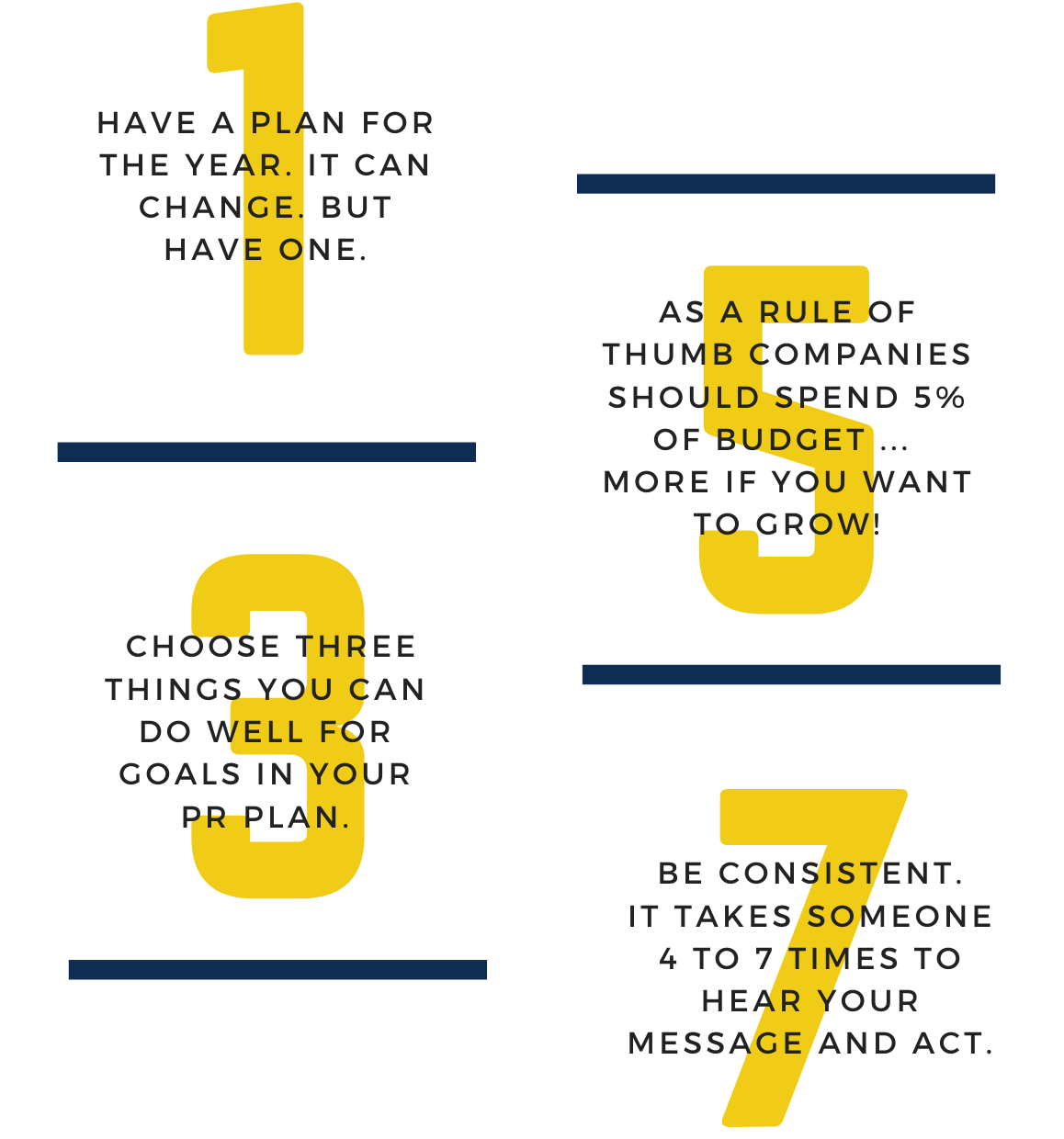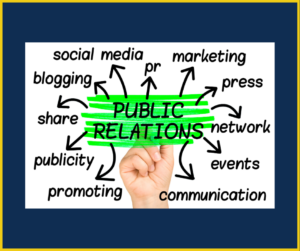 It happens regularly. A team is in the midst of executing a plan and suddenly someone walks through the door with a new idea. They read and article about a new trend. Sounds great. But it can feel deflating and even overwhelming to the professionals working on executing a public relations program.
It happens regularly. A team is in the midst of executing a plan and suddenly someone walks through the door with a new idea. They read and article about a new trend. Sounds great. But it can feel deflating and even overwhelming to the professionals working on executing a public relations program.
Yes, public relations plans need to flex and change based on the current business environment. Yet jumping on trends without a solid understanding how the communications tool works can feel like adding one more thing to the to-do list instead of a strategic move.
Remain nimble/flexible with a plan
What is your public relations plan for the year? It’s important to have one in place and to continue moving forward. The plan will change if someone leaves the company and capacity gets tighter or your industry has a major announcement. There’s a difference between checking in and adapting and completely changing course. If a new communications trend falls into the mix, let the team talk it through to determine how it would strategically benefit the goals in the plan.
Keep it simple
A Forbes article from January ranks simple #1. I 110% agree. Simplicity is the essence of good taste. The essence of any public relations plan is keeping it simple, easy and manageable. The age of digital has created the perception that PR is a complex system that feels hard to navigate. It doesn’t have to be hard if you don’t want it that way. Bottom line, if everyone on the team doesn’t understand what you’re doing and why, then it might be time to step back and figure out why.
Set goals
What are three things you want to do this year and how will goals be accountable? I say three because I truly believe focusing well on a few initiatives at one time is the best way to succeed. Perhaps your website hasn’t been updated to work for your business in years. Think about the steps and time involved to make that right in a year’s time. Consider what you want that website to do for your business and how it will be measured (the goal).
Know your audience
Most business owners and leaders know their audience: internally employees, externally prospects, customers and so on. It’s critically important to think like your audience is thinking. If you’re running a global business, consider this. A McKinsey study shows people around the world have very different mindsets related to returning to “normal” activities. Here’s the contrast among those who reported, “I’m already doing them:”
- 81% in China
- 36% in America
- 18% in Mexico
Qualitatively speaking, during a recent local business meeting, a group was asked if they wanted to move Zoom meetings to in person. The trend is going back to the office, right? The business professionals preferred to stay online. They like the time earned back in their day. It is important to them.
Know the message
If your company doesn’t have a document that outlines the message, you should. We consider this document similar to logo colors and use. The message is part of your brand standard guidelines. Review it with this lens:
- An Ernst & Young survey shows that 59% of surveyed consumers are more likely to shop locally in the long term. Is your business local or selling local goods? Should it be in the message?
- A Consumer Index Report by Suzy Consumer Insights shares that 65% of consumers are more likely to support a brand that cares about the same social issues they do. What’s your community relations program and do you share it?
Know your tactics
Externally study after study shows it takes a person four to seven times to hear from you to recognize and remember your business. What are those four to seven tactics? Tactics include (but are not limited to) social media, media relations, business conferences, websites, SEO, PPC, speaking engagements and on and one. Think about how they could change in the future. For example, sending a mailer to a business several years ago when everyone was working at home didn’t make sense. Yet sending that mailer now might be a great idea.
Consider how the message gets communicated within the workplace or at home offices. Employees trust their managers. Are managers prepared to continue sharing critical company news as the year unfolds? Are they trained to deliver the message, and more importantly, do they know the message?
Share your public relations plan
Working quickly or without pulling in key team members sometimes means we inadvertently skip critical steps, including sharing information with or getting input from the right people. Remember to share your public relations plan with the professionals in your workplace who need to know. For example, public relations can impact the sales team generating leads. Does the director of sales know the plan and buy into it?

 that doesn’t work. Change the plan by removing it. We all get busy. If there’s a tactic you’d like to try but don’t have time this month, shift the idea. Keep the plan on paper and electronically for everyone to see/review and change.
that doesn’t work. Change the plan by removing it. We all get busy. If there’s a tactic you’d like to try but don’t have time this month, shift the idea. Keep the plan on paper and electronically for everyone to see/review and change.

 Business owners looking for public relations support and counsel often discover an independent PR agency is better suited to fit their needs. What exactly is the difference between a firm and an independent? If you’re shopping for a partnership, here are a few things to keep in mind.
Business owners looking for public relations support and counsel often discover an independent PR agency is better suited to fit their needs. What exactly is the difference between a firm and an independent? If you’re shopping for a partnership, here are a few things to keep in mind.